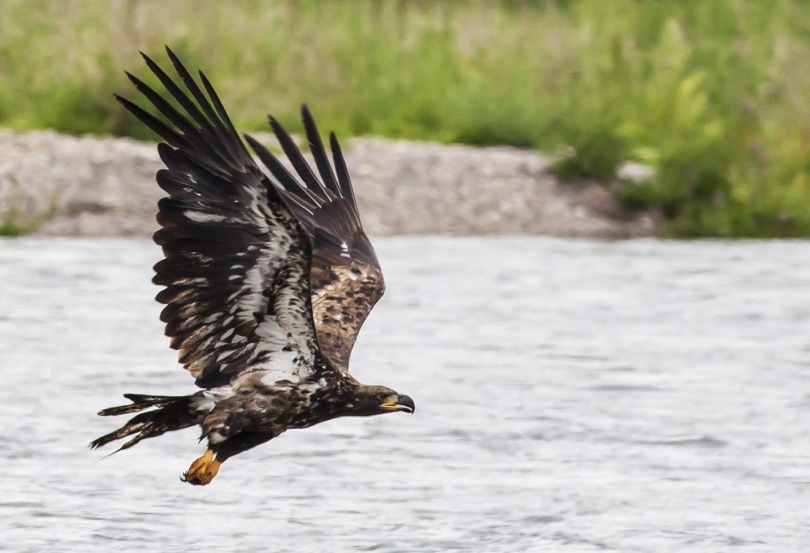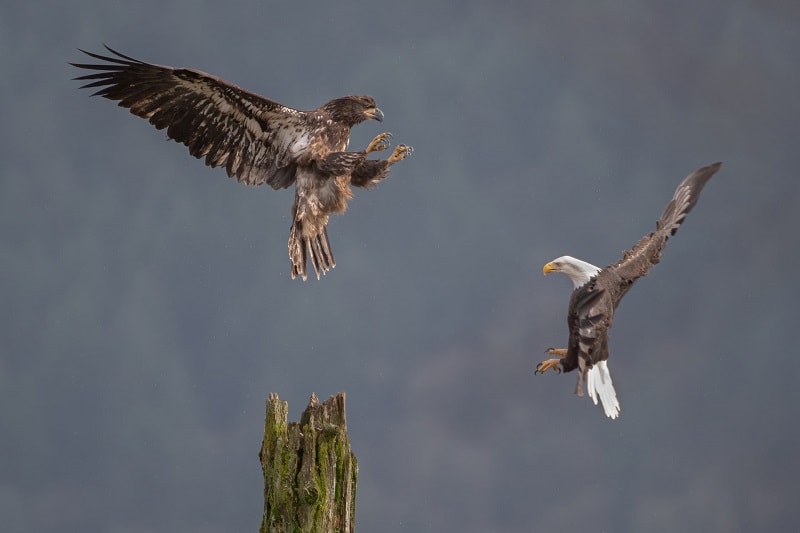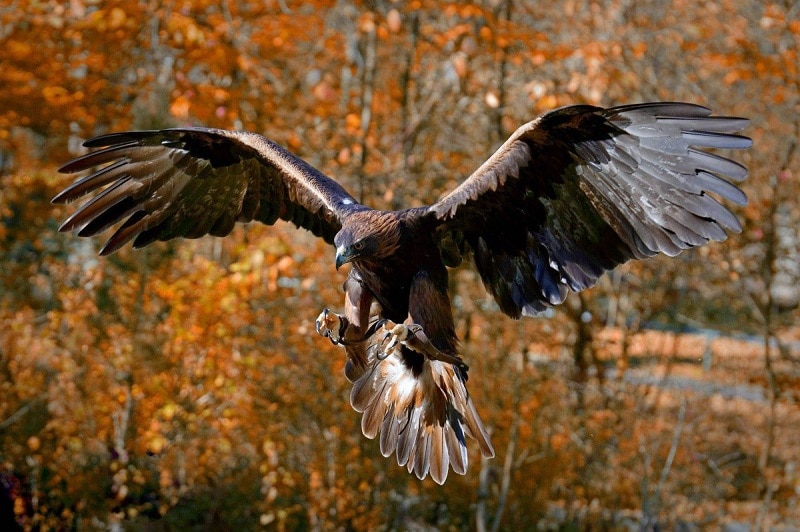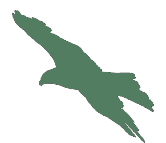Table of contents

金雕是一种可怕的捕食者,可以捕食各种不同的动物来维持自己的生命。 它们有惊人的视力,可以帮助它们从高空中发现猎物和其他物体。 它们还拥有长长的爪子(长度可达2.5英寸!),用来刺穿猎物。
这些鸟因其金黄色的羽毛而得名,完全长大后体重可达11磅。 在过去,金雕被用来为人类捕猎和捕获猎物。 在野外,金雕成双成对,一生都在一起维持一个大的家域。
See_also: 2个DIY蜂鸟屋计划,你今天就可以做(有图片)。| 物种名称 | 鹰嘴兰 |
| 人口 | 约300,000 |
| 范围 | 不受限制的 |
这些鹰被发现生活在北半球的许多地方,包括亚洲部分地区、非洲地区、欧洲的自然栖息地、北美的西部各州和加拿大的北部土地。 金鹰通常终身交配。 当它们繁殖时,母亲带着婴儿留在巢里,而父亲则出去猎取食物。
金鹰的翼展

图片来源:Pixabay
金雕的翼展可以从71到87英寸不等。 雄性和雌性的翼展往往都在这个范围内。 有些雌性的翼展比雄性的大,反之亦然。
| 翼展范围 | 平均翼展 | |
| 雄性金鹰 | 71-87英寸 180-220厘米 | 80英寸 203厘米 |
| 雌性金鹰 | 71-87英寸 180-220厘米 | 80英寸 203厘米 |
- 另见:24个迷人的& 有趣的鹰的事实,你从来没有听说过
翼展是如何测量的?
金雕的翼展是在翅膀完全伸展的情况下,从一只翅膀的尖端测量到另一只翅膀的尖端。 这是获得准确测量的唯一方法,可以与现有的其他鹰和鸟类的测量结果相比较。

金雕(左)和秃鹰(右)。
金雕的翼展与其他鸟类的翼展相比较
与生活在野外的其他类型的鹰相比,金雕的翼展是一般的。 鸟的翅膀可能会小一点或大一点,但它们的翼展在尺寸上没有明显的差别。 也就是说,流浪信天翁的翼展超过3米,是非常惊人的!
See_also: 19种在阿拉巴马州发现的鸭子(附图片)。| 鸟类 | 翼展范围 | 平均翼展 |
| 东部帝国鹰 | 72-85.5英寸 180-215厘米 | 80英寸 203厘米 |
| 古尔尼之鹰 | 70-75英寸 170-190厘米 | 72英寸 182厘米 |
| 博内利的鹰 | 56-69英寸 143-176厘米 | 63英寸 160厘米 |
| 黄褐色的鹰 | 62-75英寸 157-190厘米 | 70英寸 178厘米 |
所有鸟类的翅膀都是一样的吗?
每种鸟类都有独特的翅膀,是大自然为帮助它们旅行和狩猎而设计的。 所有鸟类的翅膀都由一个翼尖、一个腕部、一个羽翼和一个翼坑组成。 所有鸟类的翅膀也都有所谓的主要、次要和隐蔽的羽毛组合。
有些鸟的翅膀又直又薄,有些则是长方形的,歪歪扭扭的。 有些鸟的翅膀很短,很结实,因为它们不会飞很远的距离。 鸟的翅膀的长度和形状决定了鸟能飞多快,多远,多高。 翅膀还负责在必要时帮助鸟捕捉猎物。
金雕的翅膀又大又长又宽。 它们的翅膀末端有明显的 "手指"。 当鸟儿在飞行时,可以在翅膀下面看到白色的标记。 可以明显看出翅膀是如何连接到身体的,就像用金属螺栓连接一样。

图片来源:Teddy58, Pxhere

总结
金雕是一个很好的标本,在野外看到它是一件很高兴的事情。 在全世界很多地方都可以看到它们在空中飞行,特别是在北半球。 它们的翅膀很壮观,很强壮,翼展也很惊人。
这些鸟在飞行时很优雅,在寻找食物时很凶猛。 事实上,当它们足够饥饿时,它们可以打倒兔子、老鼠、鸡,甚至小狗。 现在你对金雕的翅膀和翼展有了更多的了解,当它在你上方飞行时,你应该能更好地发现这种有趣的鸟。
推荐图片来源: Piqsels
